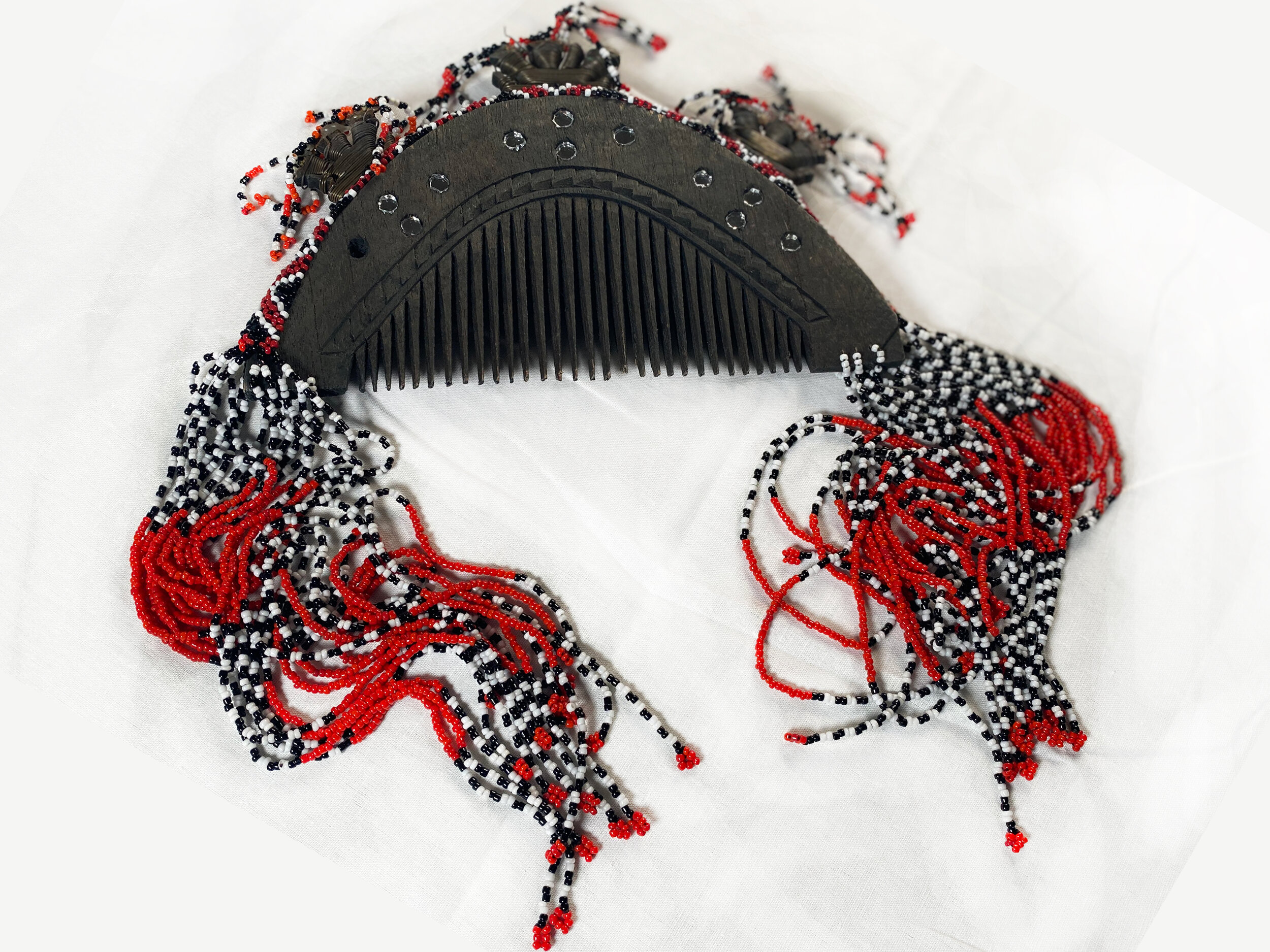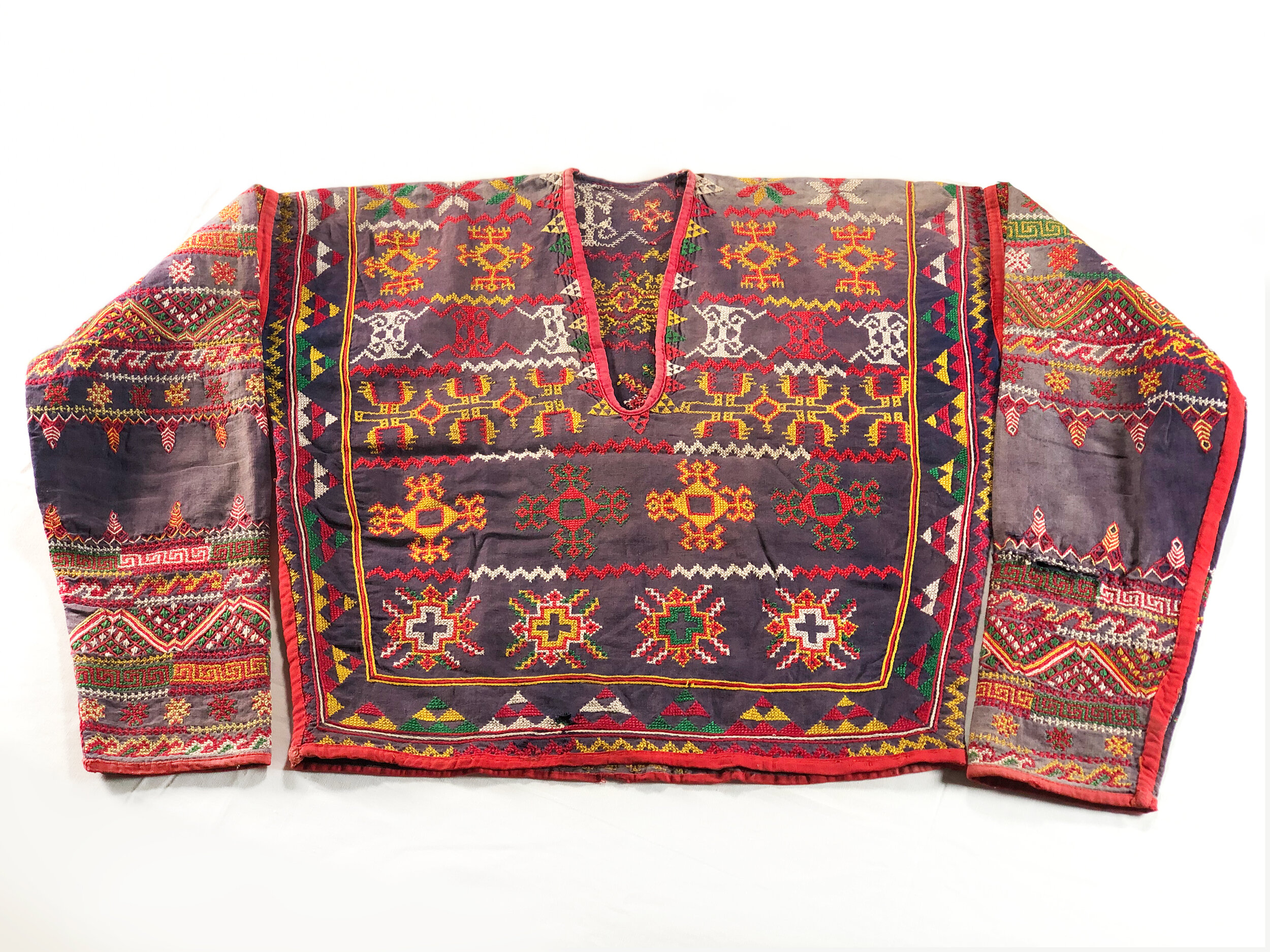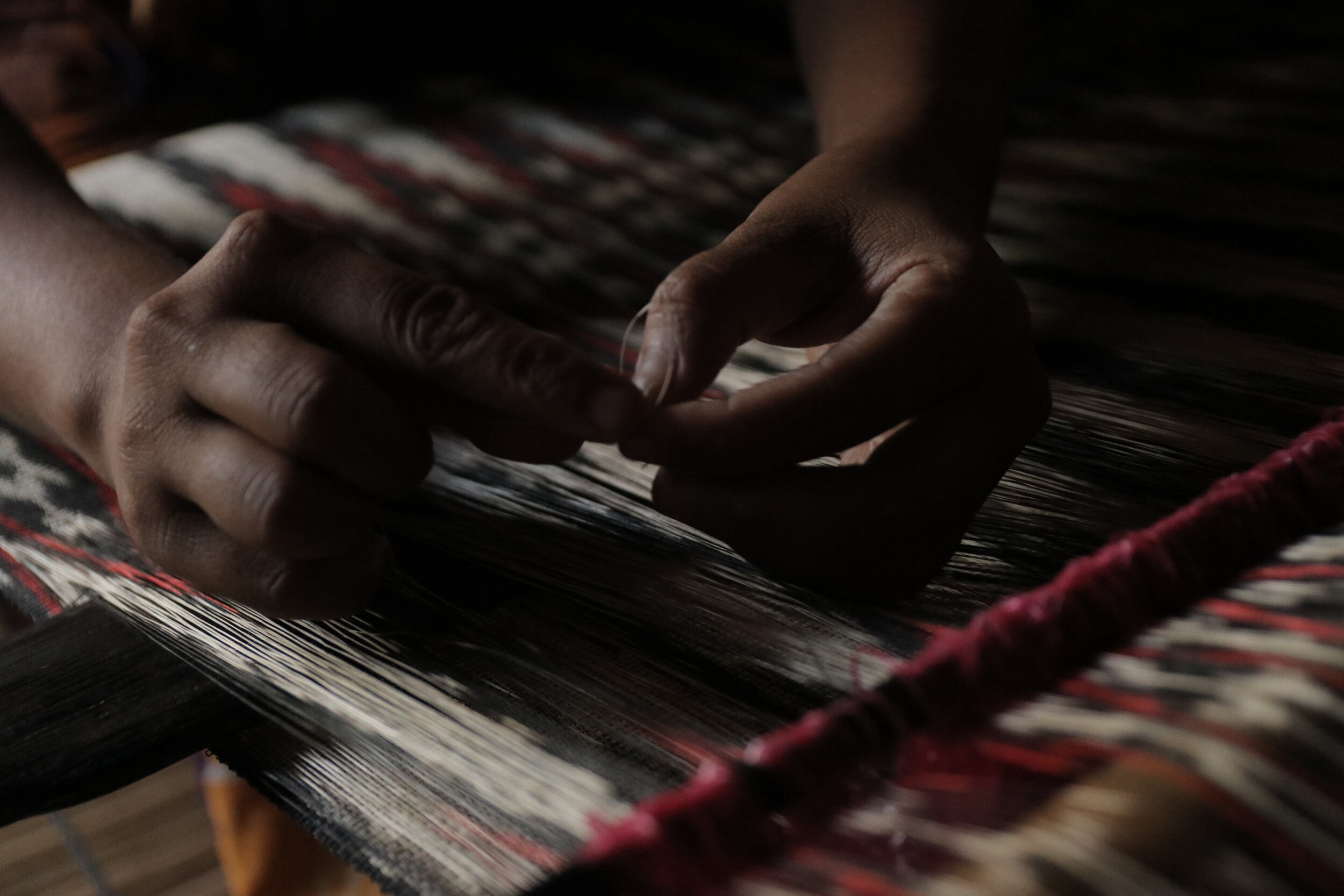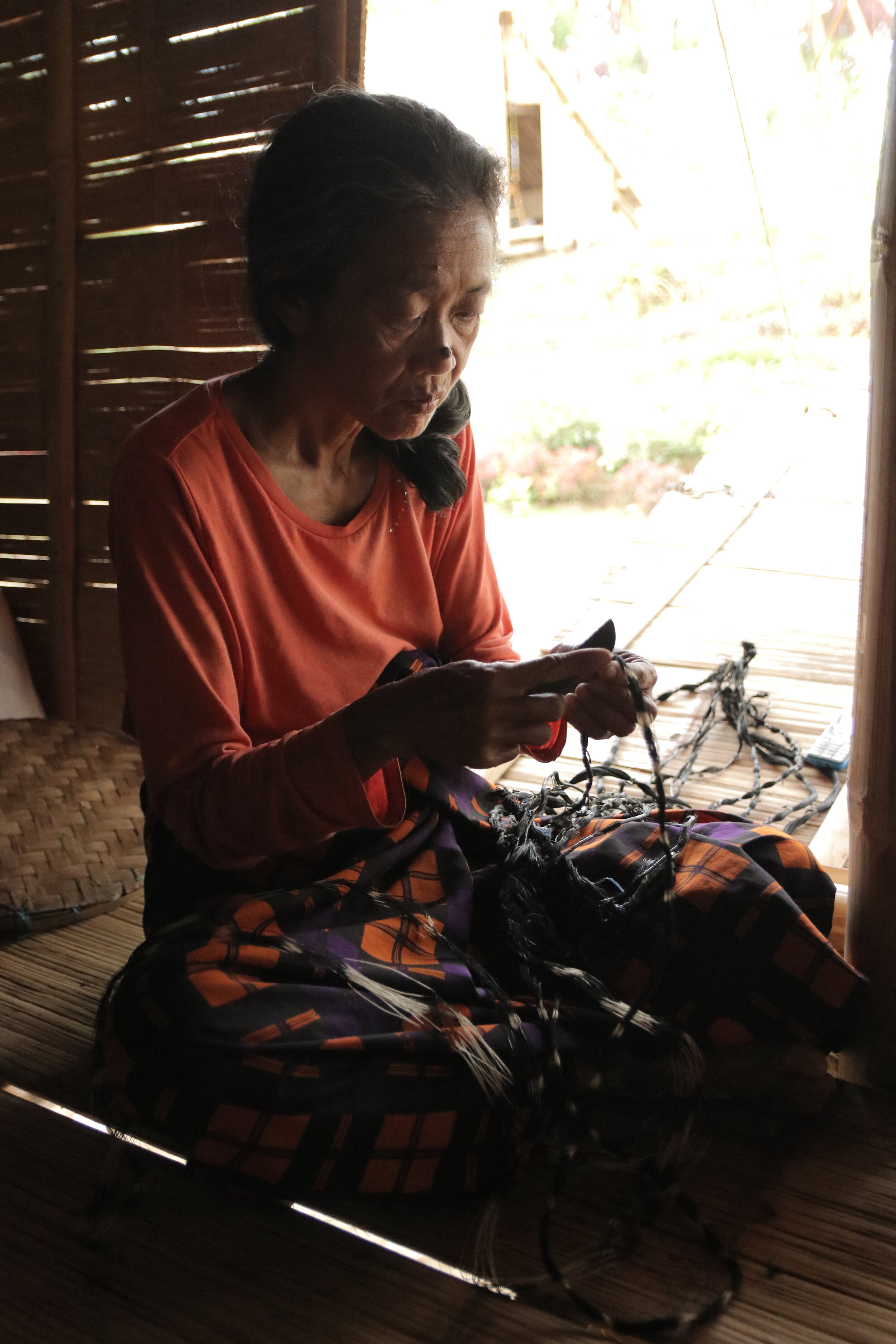SPIRIT OF THE T’NALAK
The belief system around the creation of textiles is a world where mortals and spirits intermingle as dramatized in rituals of appeasement and penance, and in the belief in life after death. Weavers use materials coming from the natural environment and these materials are grass, pineapple fiber, pandan leaves, banana fiber, sinamay, and abaca. All these are regarded as sacred because they contain a spirit. When a weaver tries to get inspiration from nature, the inspiration is from a spiritual world.
The T’boli, the indigenous people of Lake Sebu in the highlands of South Cotabato, Mindanao, design the abaca tie-dyed t’nalak textile. The t’nalak are woven dreams. It’s tie-dye patterns are handed from mother to daughter, or bestowed on the weaver in dreams by Fu Dalu, the female spirit of the abaca. Like the t’nalak, the artist tries to preserve the original nature of the material as much as possible, as shown by the undyed threads and the feel of the finished product.
This devotion to the natural world is a reminder of the sacredness that it possesses. This is true to many other art forms of the Philippines, being able to distinguish where all created art is derived from is the continuous honoring of the gifts of life.
























